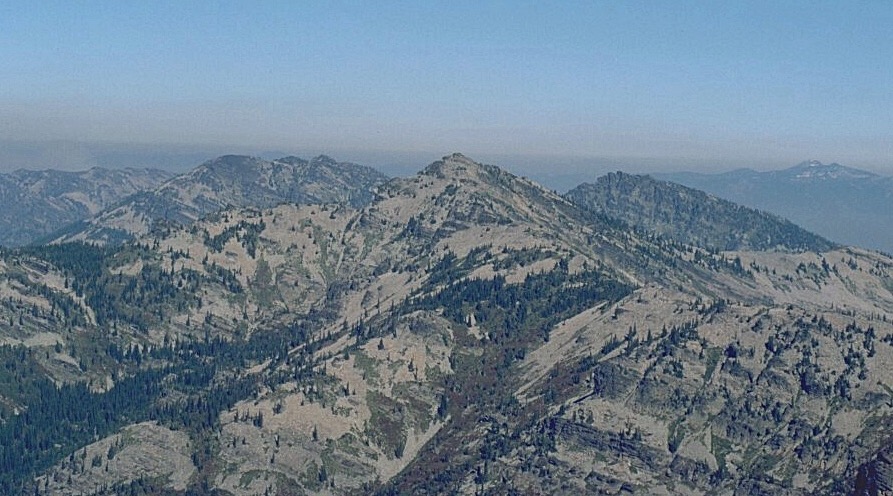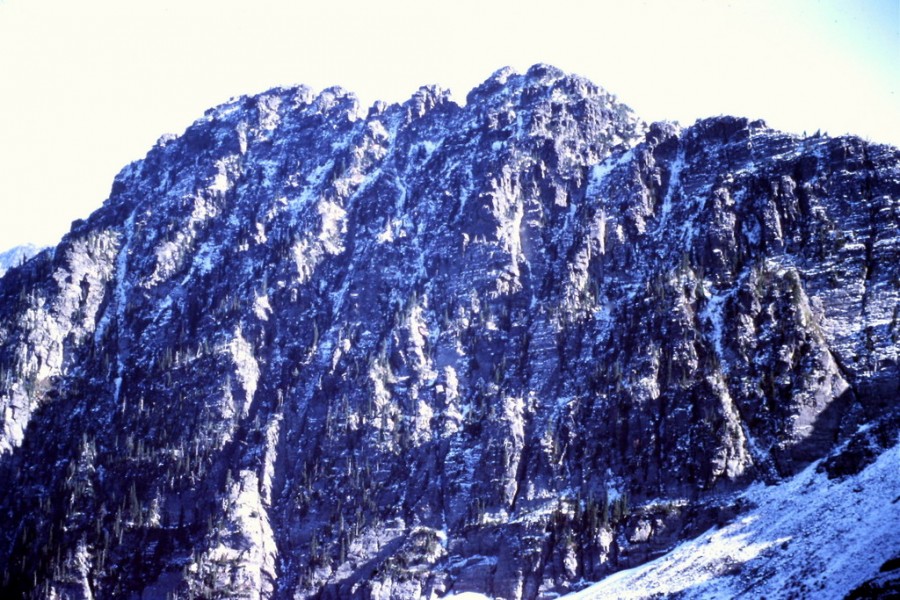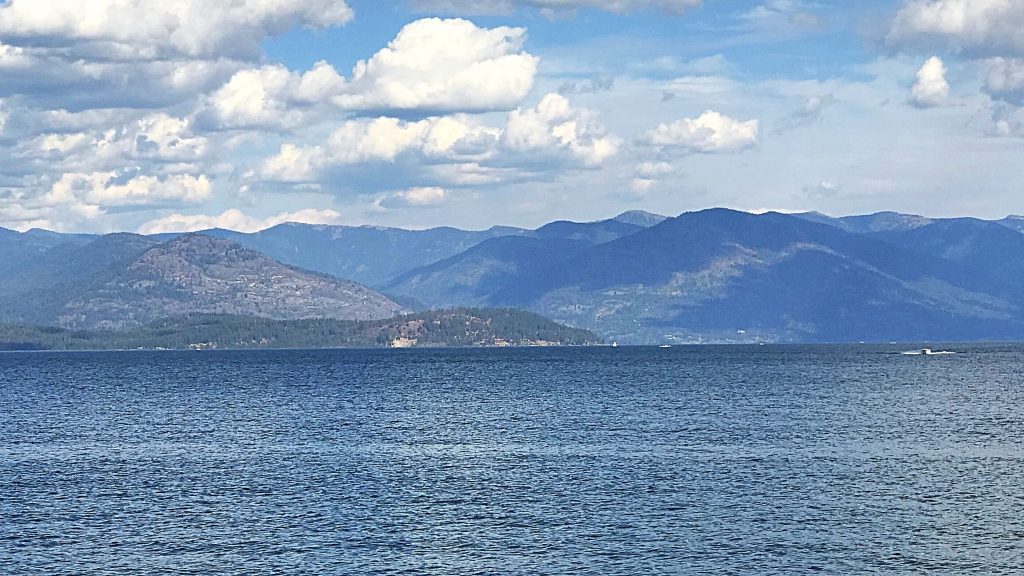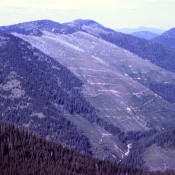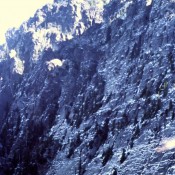
The Cabinet Mountains are discussed on Pages 51-55 of the book.
The Cabinet Mountains share many similarities with the Purcell and Selkirk Mountains. The range’s foundation is Precambrian Belt Supergroup rocks, which were carved and shaped by Pleistocene glaciation. Many peaks are high dome-shaped mountains, while a few like Scotchman Peak are sharp, sheer-edged summits reminiscent of the North Cascades. Summit elevations range from 6,000-7,000 feet. Scotchman Peak (7,009 feet)is the highest of the Cabinet Mountains. Use this link to view a list of all Cabinet Mountains peaks covered on this website: Cabinet Mountains peaks.
If you would like to help protect these beautiful mountains visit the Friends of the Scotchman Peaks website.
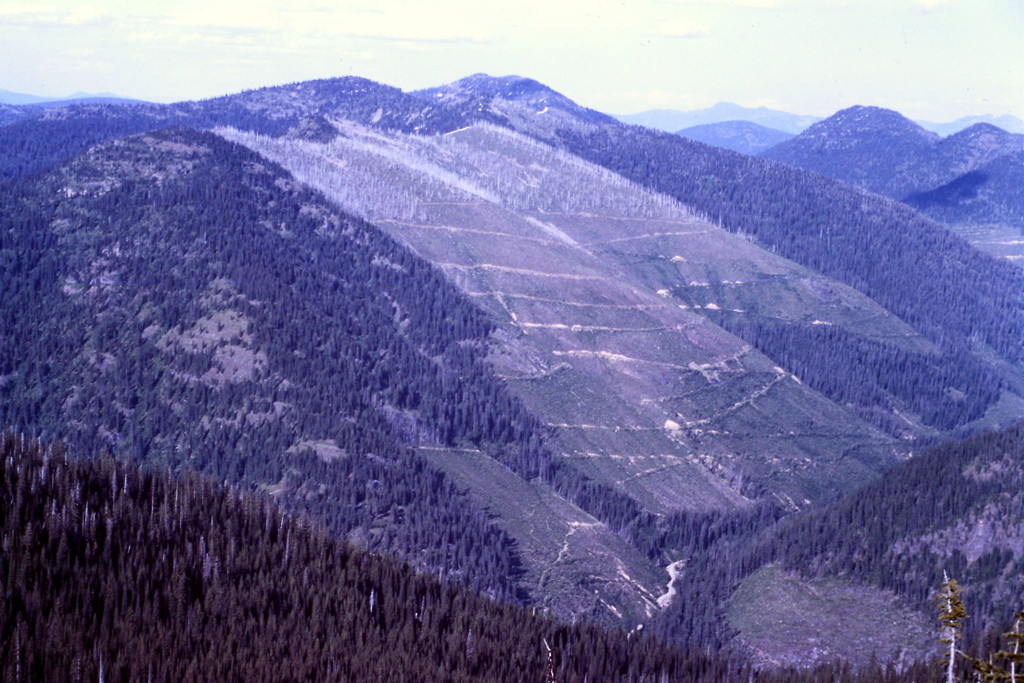
This picture was taken in 1984. The giant clearcut shown is just one of many. It demonstrates the pressures placed on these mountains by resource extractors.
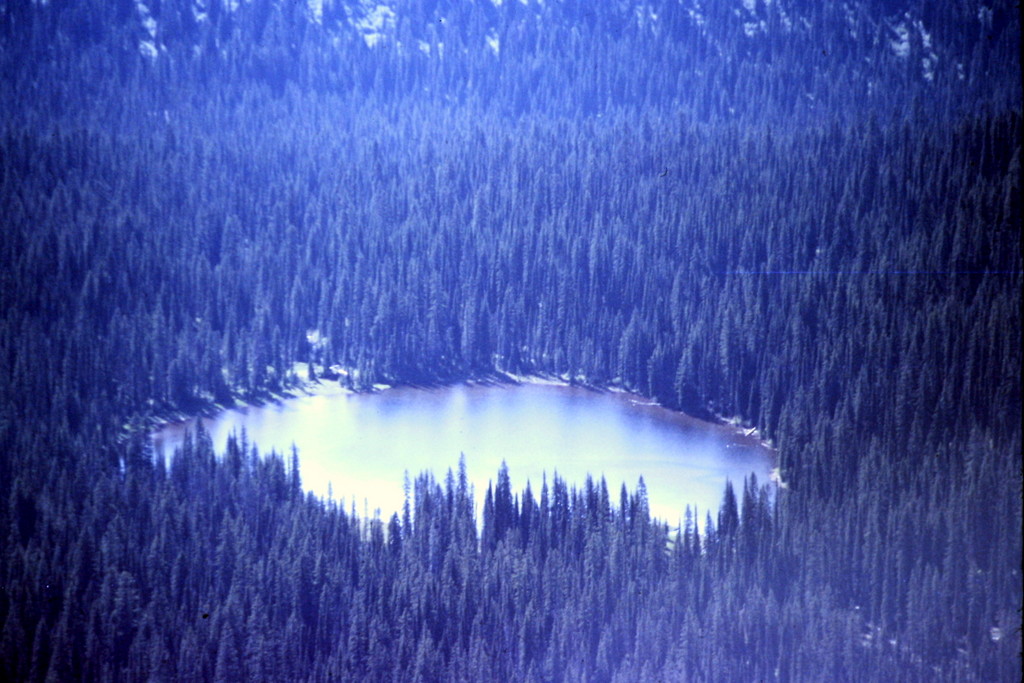
There still are places in the range worth protecting. This is Darling Lake near Mount Pend Oreille.
